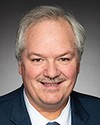Thank you, Mr. Chair.
I would like to ask Professor Lijphart a question before I turn to Professor Pelletier.
I feel that it is increasingly clear that proportional systems are more representative, more stable and more effective. They encourage dialogue between political parties, given that parties have to work together. In addition, they provide better public policy than governments that evolve in a “winner takes all” kind of system.
However, some people seem to have some hesitation, some doubt, about the two types of members, the ones elected locally and the ones elected from the lists.
Could you explain to us how things are done in the many countries that have operated in this way for decades, and tell us how voters perceive those two kinds of members, who are elected in slightly different ways?






